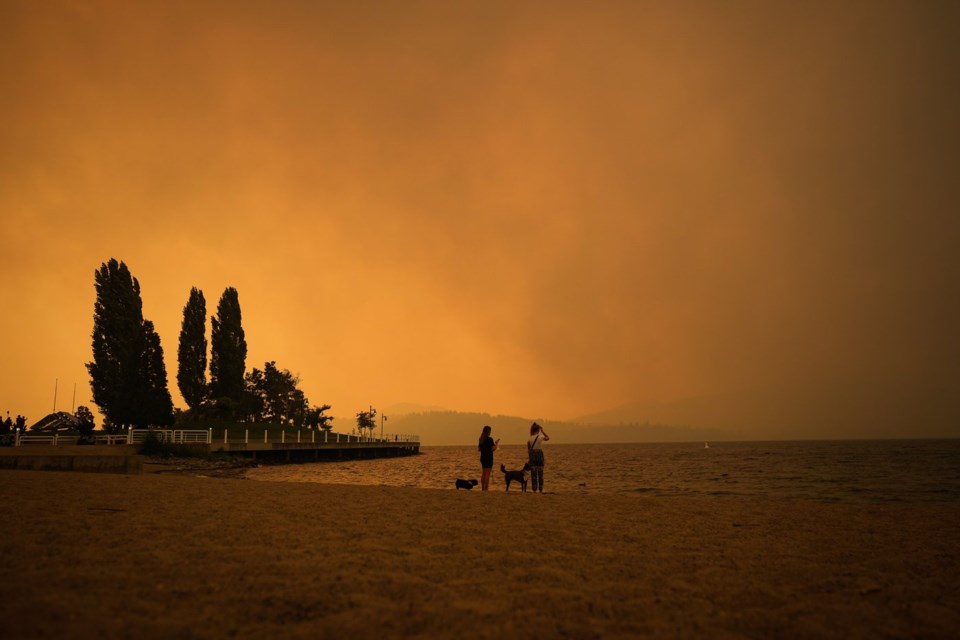A new global report says record-breaking 2023 wildfires drove Canada's air pollution to levels not seen since at least the late 1990s and exposed half the country to pollution concentrations above the national standard.
Canada's average pollution levels were near the middle of the pack among the countries and territories included in the report, but some of its hard-hit wildfire regions rivalled some of the world's most polluted places.
The researchers estimate if 2023 levels of pollution in areas of Northwest Territories and northeastern parts of British Columbia were sustained over a lifetime, compared to staying within the World Health Organization's guideline, that could cut life expectancy by about four years.
The report produced by the Energy Policy Institute at the University of Chicago says Canada's 2023 national average air pollution was the worst it's been since the group's records began in 1998.
The annual Air Quality Life Index update combines data from satellites and ground monitoring stations to come up with estimates of average levels of pollution called PM2.5, fine particulate matter so small it can travel deep into the lungs and pose serious risks to human health.
The report says air pollution and climate change, which is leading to more severe wildfires, are "deeply connected" and are driven by the same source: the burning of fossil fuels.
"If we want to solve this, we need to go to the root of the issue, which is fossil fuel burning," said Christa Hasenkopf, the director of the Clean Air Program at the Energy Policy Institute at the University of Chicago.
The report estimates Canada's 2023 average PM2.5 concentrations were around 9.2 micrograms per cubic metre, slightly higher than the national standard of 8.8, but almost twice as high as the WHO's guideline of 5.
The researchers estimate that if those levels were maintained over a lifetime, compared to WHO guidelines, it would cut life expectancy by about half a year.
The report says about 50 per cent of Canadians were exposed to levels above the national standard in 2023, "a stark jump" from less than five per cent in the previous five years.
Globally, the report says air pollution is the greatest external threat to life expectancy. In Canada, 2023 levels would make air pollution the fifth biggest external threat, ahead of self-harm and interpersonal violence, and just behind alcohol use and unintentional injuries.
While 2023 was an unprecedented wildfire year in Canada, this year now ranks as the second worst on record.
The researchers' life expectancy methodology comes from two peer-reviewed studies that analyzed a "unique natural experiment," based on China's Huai River policy, the report says.
The 1950s policy provided people north of the river with free or heavily subsidized coal for indoor heating during the winter, but not those to the south, the studies say.
Those studies found a significant drop in life expectancy north of the river where pollution levels were higher, mainly due to a significant rise in deaths from heart and lung disease. There was no clear change in deaths from other causes north of the river, the studies say.
By comparing two subgroups of the same population that experienced prolonged exposure to different levels of air pollution, the studies were able to "plausibly isolate" the effect of air pollution from other facts that affect health, the report says.
This report by The Canadian Press was first published Aug. 28, 2025.
Jordan Omstead, The Canadian Press



